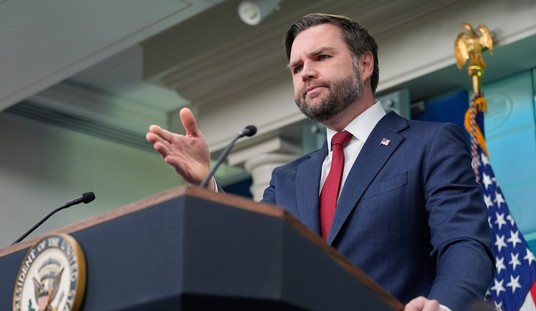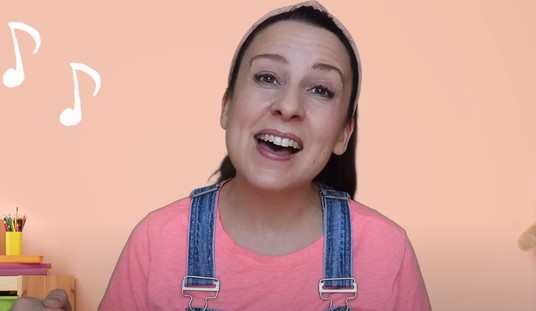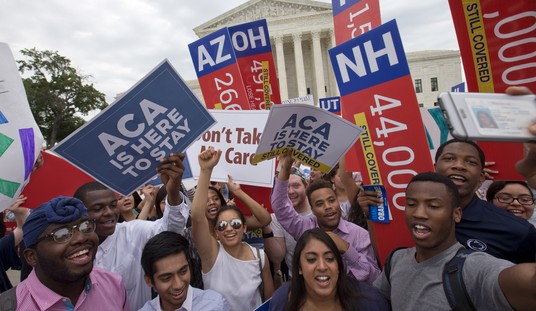At ground level, Republicans win elections by doing one or more of five things:
1) Get more Republicans to vote;
2) Get more people to become Republicans, and vote;
3) Get fewer Democrats to vote;
4) Get fewer people to be Democrats;
5) Get more votes from independents, i.e., people who are neither Republicans nor Democrats.
There’s been a lot of talk about the “enthusiasm gap” in turnout between Republican and Democrat voters, about how the Democrats registered a lot of voters to vote in the “historic” 2008 election who may not be likely to vote again, and about how the developments of the past two years have driven more people to register as Republicans. I won’t attempt to evaluate those arguments here. But let us focus on one simple point, #5 on the list above: Republicans won so many elections on Tuesday because they benefitted from an enormous swing in independent voters from the Democrats to the GOP.
The Wall Street Journal covers the dramatic overall swing from 2006 and 2008, as reflected in exit polls, concluding from an analysis of multiple exit polls that:
-Republicans won independents 55-40 across House races (+15);
-Democrats had won independents 57-39 in 2006 (+18);
-Obama had won independents 52-44 in 2008 (+8).
The results, of course, were dramatic. While not every race is settled, last I checked, Republicans seem to have gone 239-187 (56%) in House races (with 9 races still contested), and – assuming no further counting or recounting disturbs the current vote counts – 24-13 (65%) in Senate races, and 23-13-1 (62%) in Governor’s races (at least Connecticut and Minnesota remain contested, although Minnesota looks like it’s fairly likely to go Democratic and the Democrat currently leads in Connecticut), on top of making colossal gains in lower-profile state legislative races, gaining some 680 seats, winning control of 18 new chambers and at long last returning to the levels of Republican influence in state legislatures that were last held before Herbert Hoover.
Now admittedly, exit polls are an inexact art at best, but they’re the best we have, and unlike pre-election polls – or the exits that get leaked before the results are out – exit polls released after the votes are counted at least are constrained to reach the same results as the final polling. To see how the exits played out in specific races, I decided to drill down on a race-by-race basis, using CNN’s exit polls for Senate and Governor races (for comparison to the WSJ’s multi-poll average, CNN showed Republicans winning independents in House races by a 56-38 margin (+18), so CNN’s numbers may be slightly more favorable than the overall average). CNN didn’t poll every contested race; it skipped the Alaska Senate race and less competitive open-seat Senate races in Indiana, North Dakota and Kansas, as well as interesting and hotly contested Governor’s races in New Mexico, New Hampshire, Minnesota, and Rhode Island. That said, CNN polled 25 of the 37 Senate races and 19 of the 37 Governor’s races, and the results are interesting enough for what they are.
Let’s take a look first at the Senate races, with the Republican candidates ranked by how well they showed with independents, as well as the share that independents made up of each state’s electorate (some states have a lot more independents than others, usually depending on whether one or other party has a ton of registered voters in the state):
| R Candidate | I(R) | I(D) | Marg | ST | I Share | W/L |
|---|---|---|---|---|---|---|
| DeMint | 69 | 14 | 55 | SC | 23 | W |
| Boozman | 68 | 25 | 43 | AR | 37 | W |
| Grassley | 68 | 28 | 40 | IA | 34 | W |
| Portman | 66 | 27 | 39 | OH | 28 | W |
| Vitter | 62 | 32 | 30 | LA | 24 | W |
| Kirk | 61 | 28 | 33 | IL | 24 | W |
| Ayotte | 61 | 35 | 26 | NH | 44 | W |
| McCain | 60 | 30 | 30 | AZ | 36 | W |
| Rossi | 59 | 41 | 18 | WA | 42 | L |
| Blunt | 58 | 31 | 27 | MO | 28 | W |
| Paul | 58 | 42 | 16 | KY | 22 | W |
| Johnson | 56 | 43 | 13 | WI | 28 | W |
| Toomey | 55 | 45 | 10 | PA | 23 | W |
| Buck | 53 | 37 | 16 | CO | 39 | L |
| Rubio | 51 | 10 | 41 | FL | 29 | W |
| McMahon | 49 | 49 | 0 | CT | 33 | L |
| Angle | 48 | 44 | 4 | NV | 32 | L |
| Huffman | 48 | 47 | 1 | OR | 38 | L |
| Fiorina | 47 | 42 | 5 | CA | 27 | L |
| O’Donnell | 45 | 48 | -3 | DE | 27 | L |
| DioGuardi | 45 | 50 | -5 | NY | 27 | L |
| Raese | 44 | 51 | -7 | WV | 24 | L |
| Townsend | 43 | 54 | -11 | NY | 27 | L |
| Britton | 27 | 68 | -41 | VT | 35 | L |
| Cavasso | 25 | 69 | -44 | HI | 38 | L |
(If you’re wondering, Charlie Crist won only 35% of independents, a terrible showing for a guy whose entire rationale as a candidate was his supposed appeal to independents).
There are a number of interesting takeaways from this. First of all, other than totally hapless candidates like the opponents of Patrick Leahy and Daniel Inouye, virtually every Republican Senate candidate was competitive among independent voters this year, and Republicans won independents in 19 of the 25 races, including five candidates who lost anyway. The top of the chart includes some people in uncompetitive races (Grassley), some people who have always appealed to independents (McCain), and some people who ran against especially disreputable opponents (DeMint and Kirk – the next time some liberal gives you a hard time about the people who supported Christine O’Donnell for Senate, remind them that 71% of South Carolina Democrats voted for Alvin Greene for Senate. Alvin Greene.) Poor Blanche Lincoln got slaughtered, losing independents by 43 points as a two-term incumbent. But perhaps the most striking candidate to win over 60% of the independent vote is Rob Portman, the former Bush budget director running in perennial swing-state Ohio; while Portman was a good candidate running against a hapless opponent, it’s a mark of the poisonous climate for Democrats that independents broke 66-27 for an establishment Republican. Also stunning is Kelly Ayotte winning New Hampshire’s sizeable independent bloc by 26 points, running for an open seat in a New England state that voted for Kerry and Obama.
The conventional wisdom is that Tea Party Republicans couldn’t reach independent voters, notwithstanding of course the fact that much of the Tea Party movement’s success is in reaching conservative but unaffiliated voters who don’t necessarily self-identify as Republicans or even vote every year. The CNN exits suggest that, while some Tea Party-backed candidates ran better than others, virtually all of them drew more independent support than their opponents. Rand Paul won independents by 16 points, Ken Buck by 16, Marco Rubio by 16, Ron Johnson by 13. Even weaker GOP candidates like Sharron Angle, Christine O’Donnell, John Raese, Carly Fiorina, Jim Huffman (Ron Wyden’s opponent in Oregon) and Linda McMahon won a bigger share of independents than did liberal veterans like Harry Reid, Barbara Boxer, Russ Feingold and Patty Murray. While Angle and O’Donnell didn’t do well enough among independents to offset partisan advantages in their states – and Angle clearly ran far weaker among independents than Nevada GOP Gubernatorial candidate Brian Sandoval – the numbers belie the idea that they were toxic to independent voters. (Interesting side note: Angle won college educated voters, but lost non-college-educated voters by 10 points). As for the Democrats, the only Democratic candidate in a significantly contested race to win a majority of independents was Joe Manchin, who turned around his campaign with the famous ad in which he literally put a bullet through Obama’s legislative agenda. That speaks volumes about the mood of independent voters this fall.
The other take-home lesson is that a better get out the vote (GOTV) operation might have made all the difference for Ken Buck and Dino Rossi, both of whom at this writing seem to have lost nailbiters. Rossi won Washington’s huge independent faction by a blowout 18-point margin and won 96% of Republicans, but appears to have lost due to the Democrats’ large registration and turnout advantage. Buck similarly won independents by a comfortable 16-point margin, although unlike Rossi he took some losses in his own caucus (winning Republicans 89-10). The common denominator is that they lacked organizational support. The RNC, crippled by Michael Steele’s feckless financial mismanagement, was unable to put its formerly formidable GOTV operation in the field this year at all; the RGA appears to have stepped into the breach in many states that had contested governor’s races (it spent a reported $102 million under Haley Barbour’s direction), but Washington had no governor’s race (Rossi lost the last two of those, too, also narrowly) and Colorado’s GOP slate imploded despite a receptive electorate that swung the state’s General Assembly to GOP control. Money spent by the various national organs on other races might have swung those two races.
Now, let’s turn to the governors:
| R Candidate | I(R) | I(D) | Marg | ST | I Share | W/L |
|---|---|---|---|---|---|---|
| Sandoval | 60 | 32 | 28 | NV | 32 | W |
| Foley | 59 | 38 | 21 | CT | 33 | U |
| Corbett | 59 | 41 | 18 | PA | 23 | W |
| Brady | 58 | 29 | 29 | IL | 24 | L |
| Perry | 56 | 40 | 16 | TX | 33 | W |
| Haley | 56 | 41 | 15 | SC | 23 | W |
| Walker | 56 | 42 | 14 | WI | 27 | W |
| Brewer | 55 | 40 | 15 | AZ | 37 | W |
| Kasich | 53 | 37 | 16 | OH | 28 | W |
| Scott | 52 | 42 | 10 | FL | 29 | W |
| Dudley | 52 | 43 | 9 | OR | 37 | L |
| Branstad | 51 | 41 | 10 | IA | 34 | W |
| Whitman | 47 | 43 | 4 | CA | 27 | L |
| Aiona | 47 | 51 | -4 | HI | 38 | L |
| Dubie | 45 | 51 | -6 | VT | 35 | L |
| Stephen | 44 | 53 | -9 | NH | 43 | L |
| Paladino | 41 | 49 | -8 | NY | 27 | L |
| Keet | 38 | 59 | -21 | AR | 37 | L |
| Maes | 11 | 39 | -28 | CO | 40 | L |
(Tom Tancredo, as the de facto Republican candidate after Dan Maes’ collapse, won 48% of independents, running ahead of both Maes and Democratic winner John Hickenlooper).
Given that governors’ races are less tied to Washington partisanship and ideology, we see a slightly less uniform trend here and fewer blowouts in favor of the GOP candidate, but again, Republicans across the board ran exceptionally well with independents. Note that Bill Brady, who narrowly lost the Illinois Governor’s race to Rod Blagojevich’s running mate, ran as well with independents as almost any GOP gubernatorial candidate in the country; he just ran ever so slightly behind Mark Kirk, and the Democrats’ registration advantage in Illinois is too much to overcome without a huge win among independents. Brady, Tom Foley in Connecticut and Chris Dudley in Oregon stand as the three Republicans who won a majority of independents and (assuming the “counting” process goes poorly for Foley) still lost. (Dudley, by the way, had the most staggering gender gap in exit polls I think I’ve ever seen – he won men by a landslide 60-36 margin and lost women by an even more decisive 62-36).
Conclusion
Four take-home lessons should be obvious:
1) Republicans and Democrats alike need to persuade independents in order to win any significant number of elections, and the mood of independent voters will be just as important in 2012 as it was in 2006, 2008 and 2010;
2) GOTV and expanding the base matter too, and it’s still possible on occasion for Republicans, at least, to lose races where they win independents decisively;
3) The broader trend among independents will be driven by the national mood and show up across the board wherever there’s a competitive race, but individual candidates matter, as weak ones will fail to draw enough strength from the national tilt to win unless they’re running in very safe states;
and
4) Good conservative candidates can and do win over independents just as well as good moderate candidates. Bold-colors conservatives like Rubio and Pat Toomey, establishment conservatives like Portman and John Kasich and moderates like Ayotte all did well with swing-state independents. Poor candidates fell closer to breaking even. Conservatives shouldn’t stop running good conservative candidates simply out of fear that they can’t win – but we should still prefer a strong moderate to a fatally defective conservative, if our goal is to win elections.













Join the conversation as a VIP Member